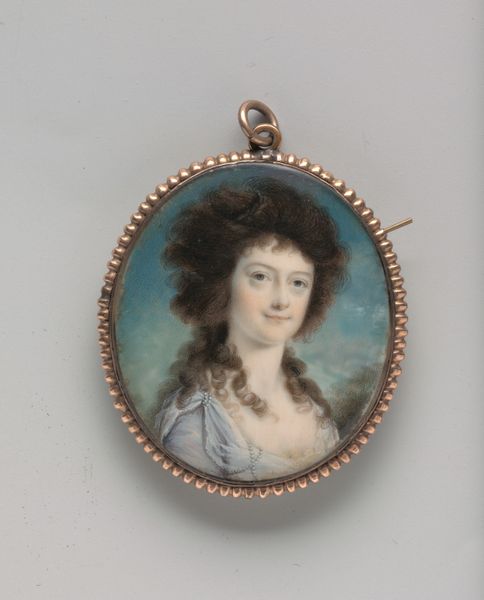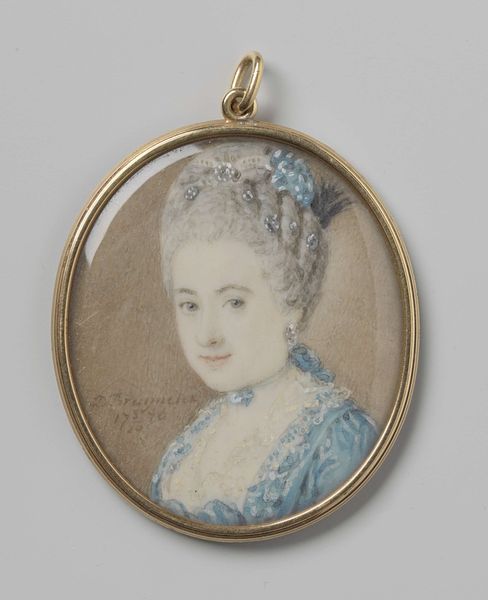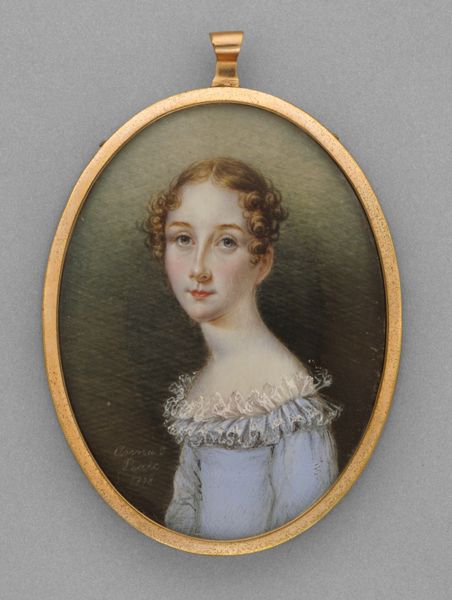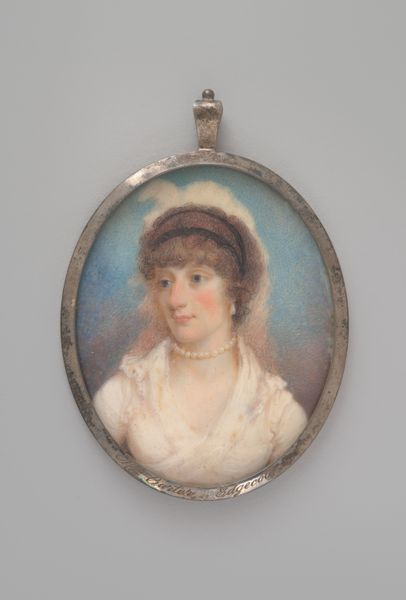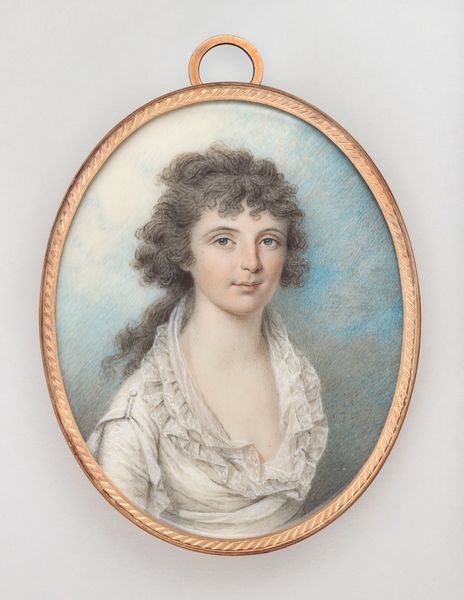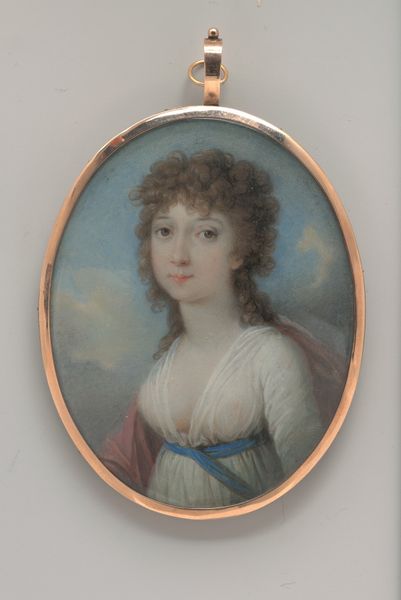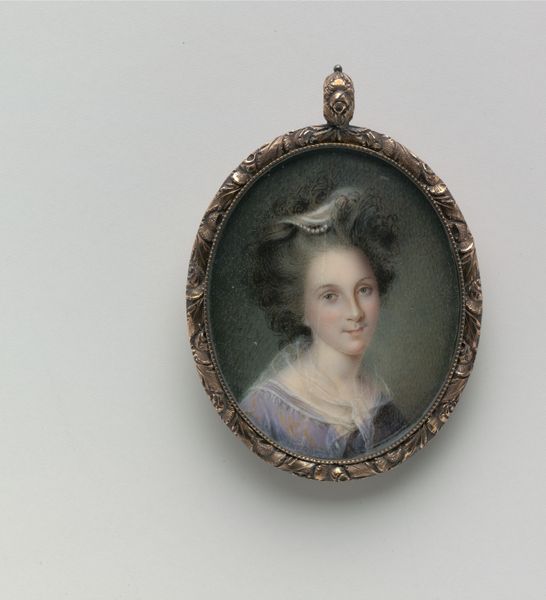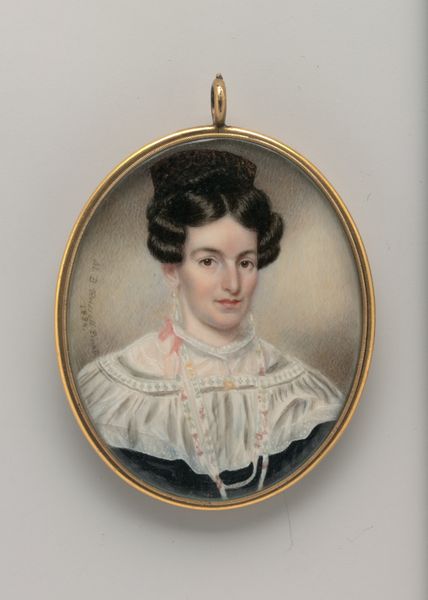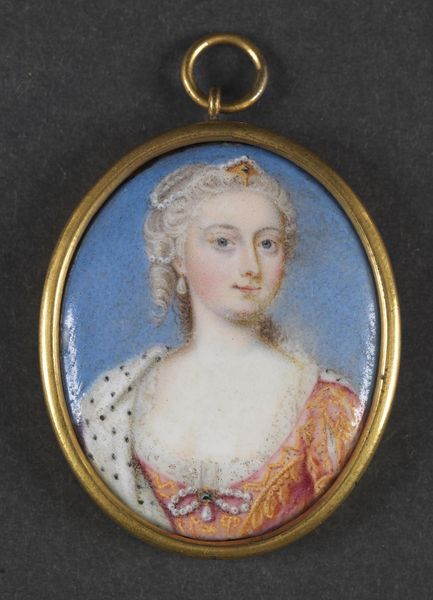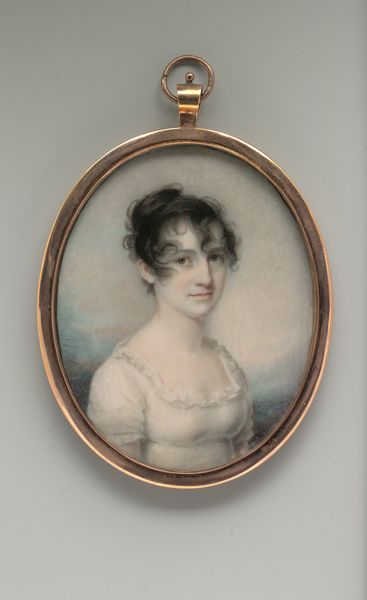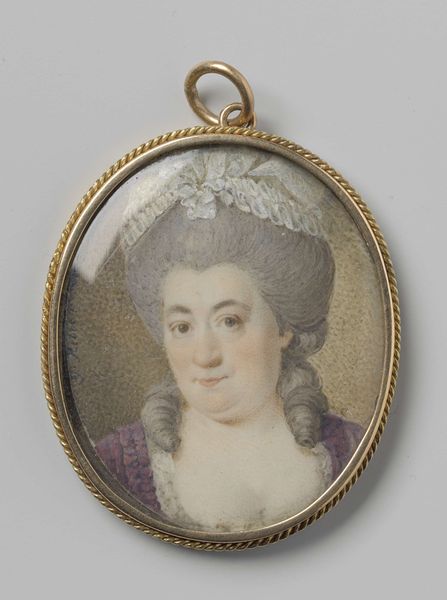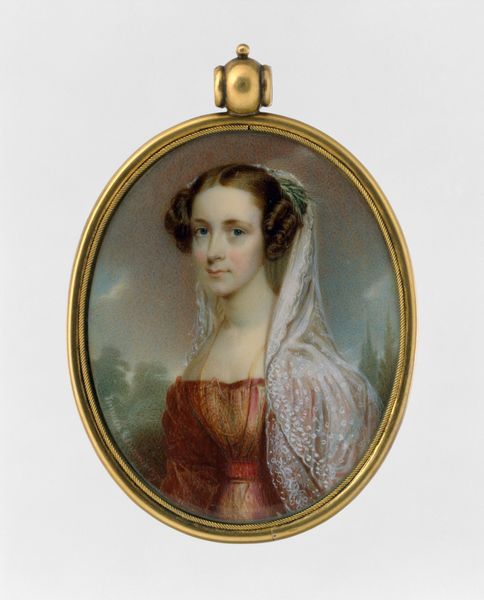
Mrs. Gabriel Manigault (Margaret Izard) 1792 - 1795
0:00
0:00
painting, watercolor
#
portrait
#
neoclacissism
#
painting
#
watercolor
#
historical fashion
#
history-painting
#
miniature
#
watercolor
Dimensions: 2 7/8 x 2 3/8 in. (7.1 x 5.9 cm)
Copyright: Public Domain
Curator: Let's focus on this watercolor miniature now. Walter Robertson completed "Mrs. Gabriel Manigault (Margaret Izard)" sometime between 1792 and 1795. Editor: There's a stillness here, almost a fragility. The soft pastel palette lends an air of gentle melancholy. Curator: Absolutely. Consider the oval format—a framing device that encourages an intimate viewing experience, reminiscent of neoclassical portraiture, with emphasis placed on form and composition. Notice the precise rendering of Mrs. Manigault’s features. Robertson employed very delicate brushstrokes to describe her hair, for instance. Editor: Yes, her expression reads as quite reserved. It would be interesting to understand the performative aspects of elite portraiture during this period. This image seems to echo the expectations around feminine identity and social status, particularly within the context of wealthy families. What narratives of power and control are embedded within such carefully constructed depictions? Curator: Certainly. The composition relies on careful color selection. Observe how the cool blues of the backdrop subtly highlight the warmer tones of her face and hair, creating visual depth within such a confined space. Editor: And that stark white dress—almost blindingly so! We cannot overlook the statement made by displaying wealth through the material of clothing. One can even analyze what type of labour the production of her clothing represents. Robertson isn’t just capturing an image, but participating in the visual language that reinforces hierarchies of class. Curator: I appreciate your emphasis on these broader systems. Robertson's meticulous approach embodies neoclassical artistic values by subtly manipulating light and color for heightened emotional impact. Editor: These miniature portraits served not only as commemorations, but tangible symbols within a complicated history, where representation intersects with social identity in early America. It’s a compelling reminder of the role art plays within that power dynamic.
Comments
No comments
Be the first to comment and join the conversation on the ultimate creative platform.
